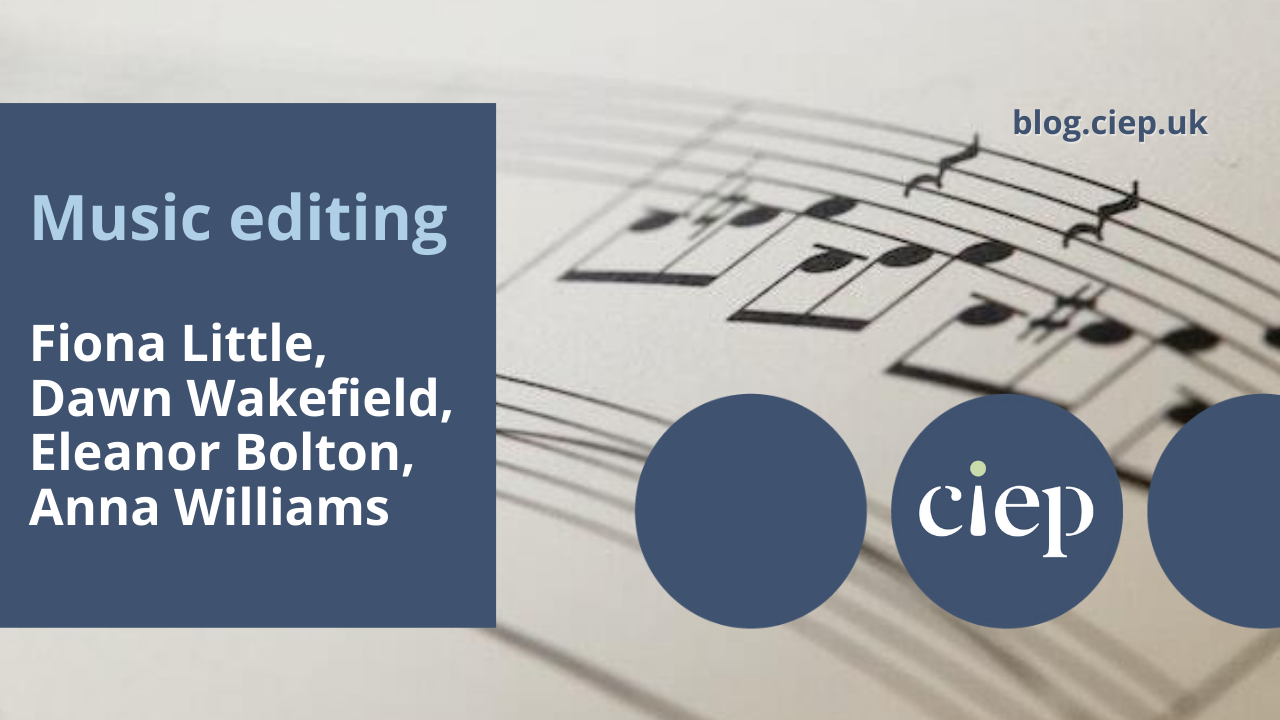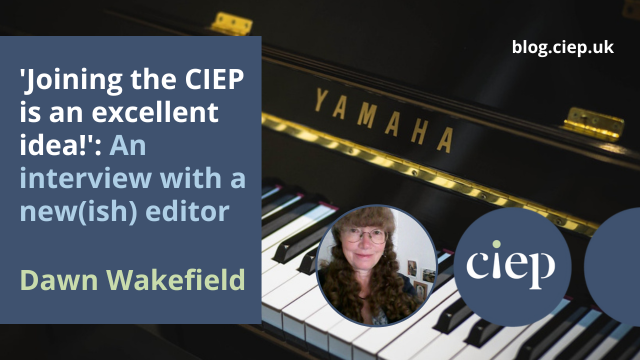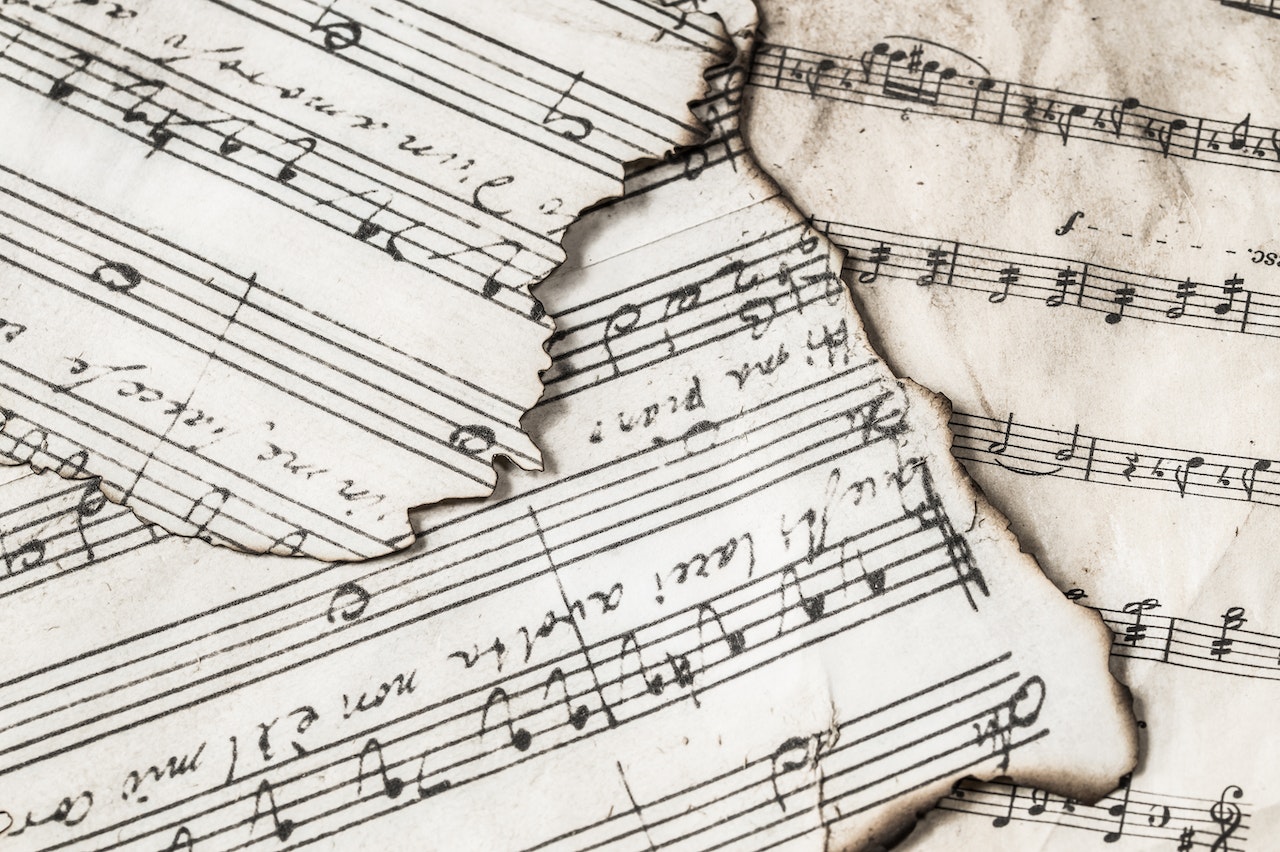What makes working on music-based manuscripts different from other subject areas? Four music editors give a flavour of this editorial speciality.
The CIEP Music forum and, shortly afterwards, the Music special interest group (SIG), led by Dawn Wakefield, were set up following the 2021 CIEP conference when it became clear that there are a lot of musicians among our members. The members of the SIG are all musical in some way, with many of us playing more than one instrument (including an unusual number of oboists!). Between us, we have experience in a broad range of musical genres, from classical to rock and gospel to folk.
We hold monthly Zoom meetings, sometimes with guest speakers, when we discuss music editing, specific editorial problems and ideas we’ve come across. One common discussion topic has been how to find clients and, just as importantly, how potential clients can find us. Google searches for music editors resulted in many links for music audio editors but nothing for those of us who edit text or sheet music. As a result, we have set up a new website, Find a Music Editor (FaME), to give us a more visible online presence.
Fiona Little: Music proofreading
I began proofreading sheet music after I had gained some experience of copyediting music books. I play several musical instruments and had edited some unpublished 18th-century music for a dissertation, so I felt reasonably confident about the work, but there was a lot to learn. Although music resembles text in that it is written and read in a linear way, from beginning to end, it also portrays sounds graphically, which is why a choir singer unfamiliar with the notation can trace their line in a score, following the ups and downs of the melody. Music notation has multiple dimensions: each note shows both pitch and duration and, as well as clefs and other symbols, there are markings for tempo (speed), dynamics (loud/soft), phrasing and so on. Finally, music normally incorporates some text, for example in the form of headings and directions, and, in vocal music, words that are sung to the notes. Good layout can help to make all these features clear.
Even with music typesetting software, errors can creep in. Although basic musical ‘grammar’ can be checked, a problem may have several possible solutions. For example, if a bar (a ‘measure’ in US English) contains five beats when the time signature specifies four, are there too many notes, is one of them too long or is the time signature wrong? Even simple errors are best queried, and you need to understand the musical style in order to work confidently.
For the proofreader or editor, addressing all these aspects is time-consuming. Whether I’m comparing with a previous version or reading ‘cold’, I work methodically in a series of passes, considering one aspect at a time: pitches on one pass, note durations and rhythms on another, and so on, hearing the music in my inner ear as I go. It all adds up to an experience that is very different from working on text.
Dawn Wakefield: Proofreading educational materials
One of the things I most enjoy about music proofreading is that it is not all sitting in front of a computer screen reading text; it can actually involve playing and listening to music.
I often work on educational piano books. First proofs of the sheet music portion of the book are usually worked through on paper as this is the quickest and most accurate way of marking music scores. Like Fiona, I take several passes to check the various elements of the notation, and then, in addition, I check or create piano fingering, shown with numbers (1 for thumb, 2 for index finger, etc). For this, I have to play through the pieces carefully and, in the process, often spot errors of pitch or rhythm, which may become clearer once heard.
The text sections of the book, as well as headings to the pieces themselves, often require knowledge of other languages. Instructions in the music are most commonly in Italian, but are often in French or German, according to the composer’s nationality. Historical background text also often contains foreign names and place names, so linguistic knowledge may be involved, for instance understanding masculine and feminine endings of Eastern European surnames or checking spelling that has been transcribed from Cyrillic.
Plenty of listening was required for a recent job proofreading online resources for an educational music course for teenagers. As well as checking that the YouTube links actually worked, I had to listen and check that the tracks were accurately described. I had a very enjoyable and nostalgic time listening to well-known pop hits from across the decades from the 1950s to the present! In one amusing incident, the music to a computer game was described as being by Grieg, yet, when I listened, I found a strange electronic version of The Blue Danube by Johann Strauss! The fact that music editing uses so many varied skills is one of its most rewarding aspects.
Eleanor Bolton: Editing books
In many ways, books about music are similar to other books. The text has to be copyedited so that it conforms to the publisher’s style guide, often, of course, with variations depending on author preference and likely readership. However, some specialist knowledge is useful whatever genre of music you work on.
Maybe the text is discussing the finer points of Schubert’s cello quintet, but the extract shows two viola parts. If you know your clefs, and that a ‘cello quintet’ has two cellos, that’s an obvious inconsistency. But what else do we need to look for? Here are some other examples of something being awry:
- The text contains a discussion of piano fingerings in a specific bar, but the excerpt in the music example doesn’t have any fingerings in that bar.
- The caption specifies bars 80–92 but the excerpt is only eight bars long.
- The caption says the piece is in ‘F# major’. Note the difference between the hash sign # and the musical sharp sign ♯.
- The text refers to Bach’s opus 1001 but the caption says ‘BWV 1001’. (J. S. Bach’s music is, uniquely, catalogued by BWV number, not opus number.)
As with many things in life, you don’t know what you don’t know. A good editor knows when (and where!) to look things up.
Anna Williams: Music typesetting and the crossover with editing
The line between the roles of music editor and typesetter (or ‘engraver’, harking back to the etched metal plates used from the late 16th century to surprisingly recently) has blurred over recent years. While some publishers retain the distinction, I am receiving more requests for ‘full package’ or ‘on-screen editing’ jobs. Though sometimes driven by a client’s desire to save time and/or money, it also taps into the crossover of skills required for each task and is made easier by advances in music notation software.
As well as the musical ‘grammar’ that Fiona mentions, plus house style, consistency and clarity checks, part of a music editor’s job is to optimise the layout and presentation of information on the page. This includes practical considerations, such as instrumentalists needing time to turn pages, or a publisher needing to fit a collection into a certain page extent, but it’s also about spacing, information density and the need for music that can be read fluently at speed.
It often makes sense to consider these layout issues before detailed copyediting and to adjust (a copy of!) the computer file accordingly. Whether or not you will be typesetting, some initial layout work can result in a cleaner manuscript to work on, saving time. Trying out different notations in the file can sometimes also guide editorial decisions, so being familiar with the software can be very helpful. Similarly, editorial knowledge is useful when typesetting. Some music publishers place much of the house style responsibility on typesetters, and understanding editorial conventions means they can fix things an editor might have missed.
I hope and believe that there will continue to be dedicated editors and typesetters in the industry, but there is a place for a combined model of working, especially for the increasing number of self-publishing composers, who are often looking for someone with both the editorial knowledge and typesetting expertise to turn their work into a publication-standard product.
If you’re an editor of music-based material, please come and join us on the Music forum, where you will find details of our meetings and more. If you’d like to be added to the Directory on our website, the details can be found on the forum.
 About the CIEP
About the CIEP
The Chartered Institute of Editing and Proofreading (CIEP) is a non-profit body promoting excellence in English language editing. We set and demonstrate editorial standards, and we are a community, training hub and support network for editorial professionals – the people who work to make text accurate, clear and fit for purpose.
Find out more about:
Photo credits: sheet music close-up by César Vanc on Pexels; pianist playing sheet music by wal_172619 on Pixabay.
Posted by Sue McLoughlin, blog assistant.
The views expressed here do not necessarily reflect those of the CIEP.





